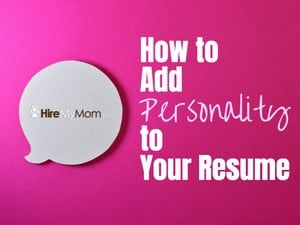How to Wow Your Audience with Amazing Blog Content

If you’re reading this, you understand the power of blogs. Blogs offer fun and interesting ways to learn new things, connect with others who share similar interests, and interact with your favorite personalities, brands, products, and services.
As a business owner, entrepreneur, or mompreneur, blogs offer a fantastic opportunity to increase your online profile, share more about your business or area of expertise, and grow your brand. Some blogs are personal passion projects, and others are geared toward selling. But all great blogs have three things in common. They all:
- Speak to a specific audience.
- Are relevant and authentic.
- Encourage action, discussion, or debate among readers.
If you have a blog or are thinking about starting a blog, these tips can help you take your blog to the next level.
Know Your Readers
Part of the magic of a blog is that it lets readers and writers connect in new ways. Thanks to the vastness of the internet, readers can find blogs on almost any topic imaginable. That same vastness means that your universe of potential readers is gigantic. Because your blog’s reach can easily exceed your customer base, the key to tapping this magic is finding the right readers for your blog. As a creator, this means that your blogs must be targeted to specific readers.
When you create a business blog, you want your content to find the right people–those who might have an interest in your product, service, or business. To make sure your blog lands with the right audience, picture the reader before you start writing. Ask yourself what you want the reader to:
- Know
- Feel, and
- Do differently as a result of reading the blog.
The answer doesn’t have to be serious–many blogs are for fun or branding. Your answer can also be part of a goal, such as creating interest in a new product and converting a certain percentage of readers to buyers. Starting with the reader in mind makes it easier to write content that resonates with your readers and accomplishes your goals.
Like all communication, understanding your audience is vital. Think about what interests your audience, what drives them, and what moves them to act/buy. Consider spending some advertising or promotion dollars to help find your followers and make sure they see your content. A social media consultant can help you find and entice the right readers. (Hiremymom.com is a great place to find a freelance Social Media consultant.)
Write Relevant and Authentic Material
With your audience in mind, it’s time to start creating content. Here are some tips to help you start writing:
- Determine what you want to say. Pick one topic for each blog. It’s tempting to try to put several ideas into one blog but stick to one. Once you start blogging, you’ll have plenty of opportunities to share all your content. And, sticking to one idea makes it easier on you as the writer and for your readers.
- Make sure the content you are considering is relevant and authentic to your voice and your brand. When you write about things you know and care about, your expertise and enthusiasm shine through.
- Choose words, phrases, and an overall style that reflects you and your business. If you are blogging about decorating, a fun, breezy tone is probably the right fit. If you blog about estate planning or insurance, you likely want a style that shows more gravitas to help you establish credibility and reflects your expertise.
- Add photos and graphics to create visual interest.
- Use spell check and tools like Grammarly to make sure your blog is free of spelling or punctuation errors. You can use a free-level grammar check or purchase an annual subscription to help make all your writing sing.
Need help writing?
Not everyone loves the process of blogging, but that doesn’t have to be a barrier to starting a blog that supports your business. If you don’t love writing or don’t have the time to do it well, consider hiring a ghostwriter. You share your ideas with a writer who then drafts your blog in your voice. You still get credit as the author while saving a lot of time.
Invite Engagement
The best blogs make readers think and create engagement, measured through likes, comments, and discussion. So, be prepared to engage with your audience and have a conversation.
End each blog with a question for readers. Invite your readers to weigh in on the topic–whether they agree, disagree, or have experiences to share. Have a plan for responding to comments. Engagement is what keeps readers returning. You may even identify a staff member or hire a virtual assistant or social media consultant to take point on responses.
Blogging is a fun and rewarding way to grow your online presence. These tips can help you take your content from ho-hum to fantastic. Leave a comment sharing your experience with blogging.








